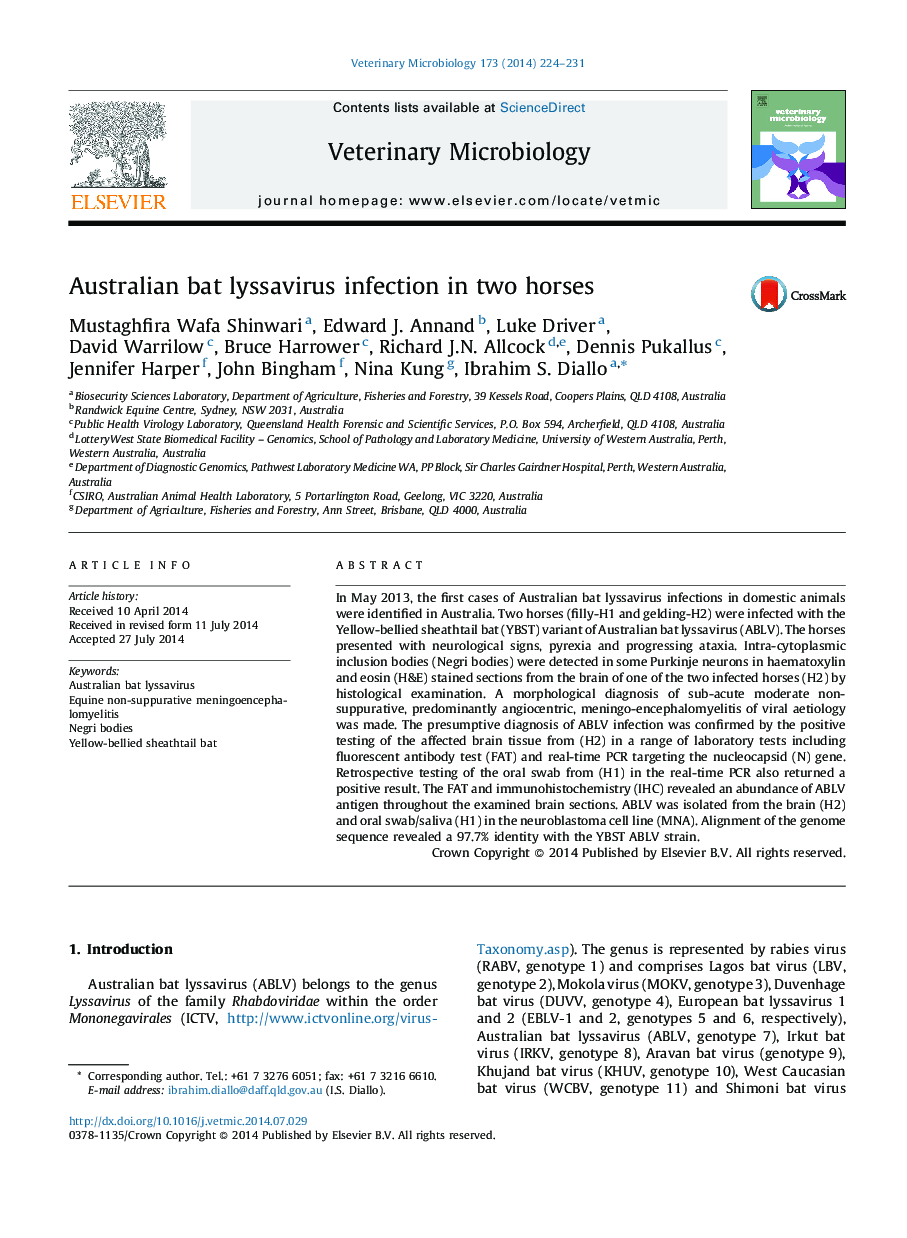| Article ID | Journal | Published Year | Pages | File Type |
|---|---|---|---|---|
| 5800226 | Veterinary Microbiology | 2014 | 8 Pages |
â¢First diagnosed ABLV infection in domestic animals in Australia.â¢Observed histopathological changes were consistent with lyssavirus infection.â¢Virus was identified as YBST strain of ABLV by whole genome sequencing.â¢The usefulness of real-time PCR for diagnosis of viral infections is demonstrated.â¢Demonstrated need to review domestic animals vaccination policy against rabies in Australia.
In May 2013, the first cases of Australian bat lyssavirus infections in domestic animals were identified in Australia. Two horses (filly-H1 and gelding-H2) were infected with the Yellow-bellied sheathtail bat (YBST) variant of Australian bat lyssavirus (ABLV). The horses presented with neurological signs, pyrexia and progressing ataxia. Intra-cytoplasmic inclusion bodies (Negri bodies) were detected in some Purkinje neurons in haematoxylin and eosin (H&E) stained sections from the brain of one of the two infected horses (H2) by histological examination. A morphological diagnosis of sub-acute moderate non-suppurative, predominantly angiocentric, meningo-encephalomyelitis of viral aetiology was made. The presumptive diagnosis of ABLV infection was confirmed by the positive testing of the affected brain tissue from (H2) in a range of laboratory tests including fluorescent antibody test (FAT) and real-time PCR targeting the nucleocapsid (N) gene. Retrospective testing of the oral swab from (H1) in the real-time PCR also returned a positive result. The FAT and immunohistochemistry (IHC) revealed an abundance of ABLV antigen throughout the examined brain sections. ABLV was isolated from the brain (H2) and oral swab/saliva (H1) in the neuroblastoma cell line (MNA). Alignment of the genome sequence revealed a 97.7% identity with the YBST ABLV strain.
